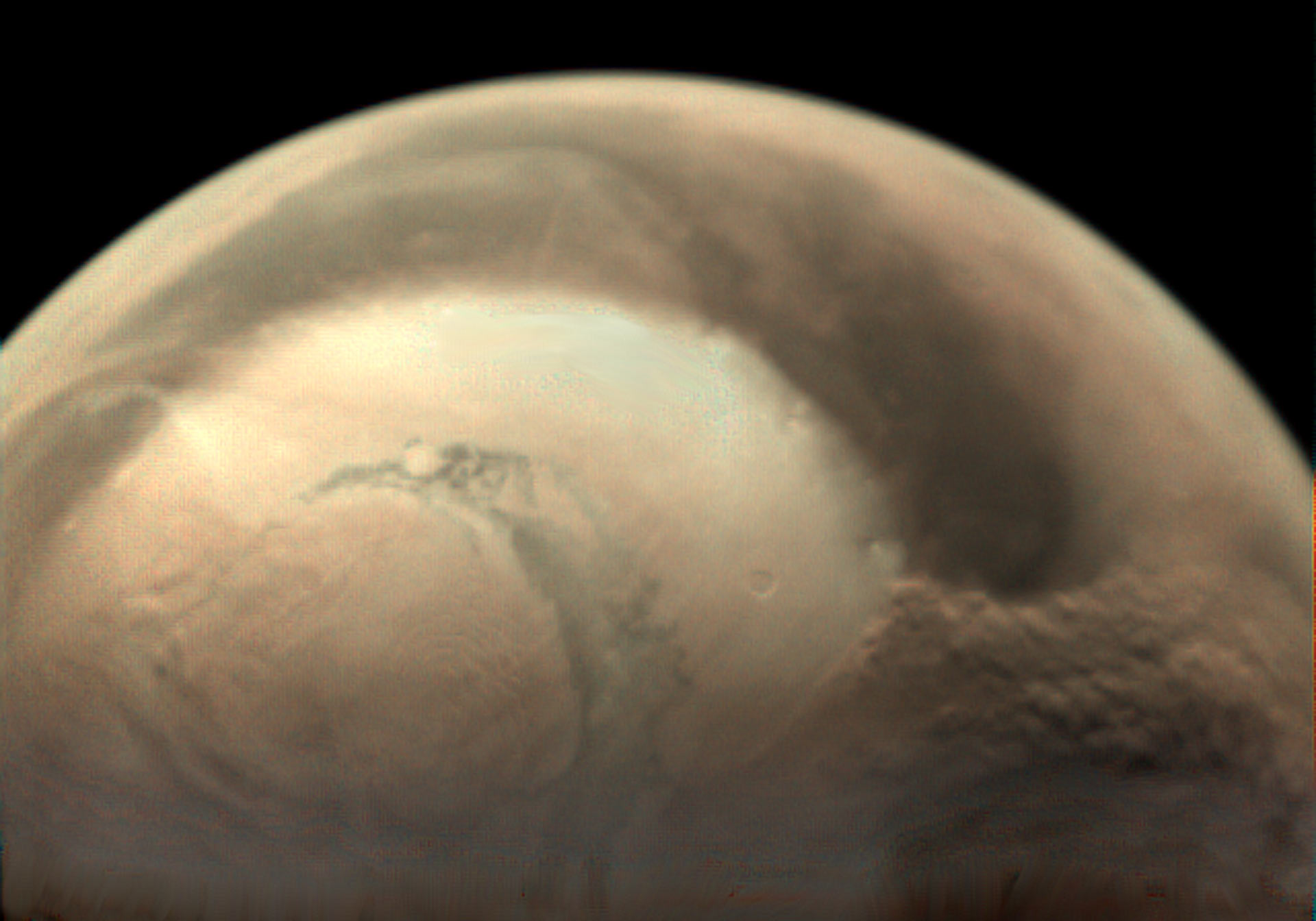
An epic dust storm around Mars’ north pole has been imaged by the European Space Agency’s Mars Express orbiter.
Localized dust storms are common on Mars, but occasionally a storm will expand into a planet-wide event like the one which caused the demise of the Opportunity rover. It’s spring at the moment in Mars’ northern hemisphere, so the ice cap is retreating and weather events like water-ice clouds and dust-lifting events are common along its border. And a huge storm is blowing in now, as captured by the Mars Express.
The images show a spiral-shaped dust storm, visible in brown against the white of the ice cap. The Mars Express also observed what happens when the dust storms reach huge volcanoes like Elysium Mons and Olympus Mons. Near to volcanoes you find orographic clouds — ice clouds which are created when air is pushed up against the sloped side of the volcano. But as the dust approaches, it warms the air and makes the ice clouds evaporate, destroying them.
The images were captured using two cameras aboard Mars Express, the High Resolution Stereo Camera (HRSC) and the Visual Monitoring Camera (VMC). The HRSC is a scientific instrument which images the whole of Mars in full color and in 3D, with a resolution of around 10 meters. If needed, it can focus in an image areas with a resolution of two meters. The VMC, on the other hand, is an engineering camera which has been repurposed for public engagement. It produces images which are automatically processed and uploaded once they arrive on Earth, so it’s now known as the “Mars webcam.”
“Since it was reactivated, this small camera has done a fantastic job in regular imaging of the planet, and through its outreach activities and social media channels is helping bring Mars closer to the public,” Simon Wood, Mars Express spacecraft operations engineer at the European Space Operations Centre, said in a statement.
If you want to check in on the action on the red planet regularly, you can head over to the VMC’s Flickr account to see all the latest images.



